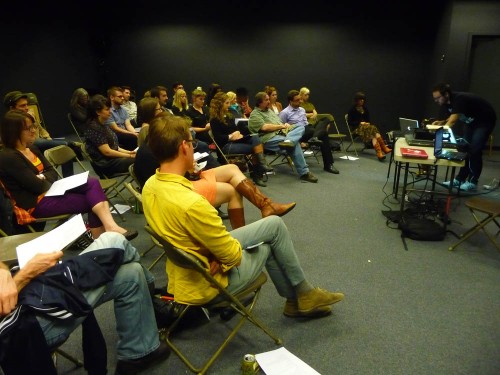Be sure to look up this First Friday in the Crossroads!
On the east-facing billboards of Missouri Bank Artboard in the crossroads district of Kansas City, MO, Calder Kamin presents two images titled Invaders (above). Reading right to left, on the first panel features a sparse flock of flying European starlings. These birds represent the first 100 released in Central Park in by Eugene Schieffelin, a drug manufacturer, who hoped to introduce every bird mentioned by Shakespeare to North America. On the second panel the few have flourished into a dense swarm, representative of the masses of starlings we see on our skyline today. After 150 years the European Starling has come to dominate our skies and cities with populations ranging to all parts of the United States. Kamin’s series of invasive species illustrations serve as reminder of how culture, including the behavior and decisions of specific individuals, affect the natural world.
About the Artboards:
An Art through Architecture “Art Achievement” project, the Missouri Bank “Artboards” launched fall 2008, when the building’s existing double-sided billboards were renovated and converted into a highly visible site for work by area artists as part of the bank’s purchase and renovation of the building to house its Crossroads Branch, completed by Helix Architecture + Design. Art through Architecture, a partnership of Charlotte Street Foundation and American Institute of Architects-Kansas City, administers the programming of the Artboards in collaboration with a panel of Missouri Bank representatives.
Art through Architecture (AtA) is designed to encourage collecting and commissioning work by Kansas City area artists through architectural practice. Through AtA, new architectural projects may earn Gold, Silver or Bronze levels of Art Achievement by dedicating a percentage of the total construction budget to collecting artworks, commissioning temporary or permanent artworks, and/or including artists on design teams.











